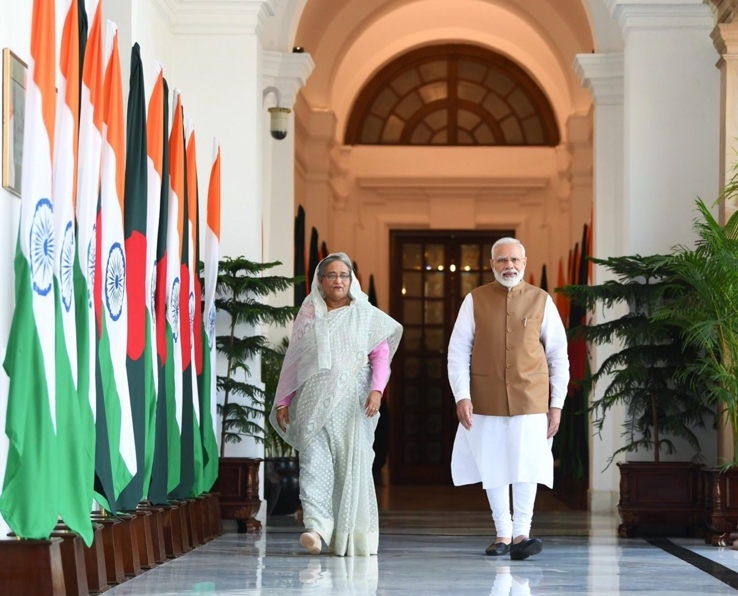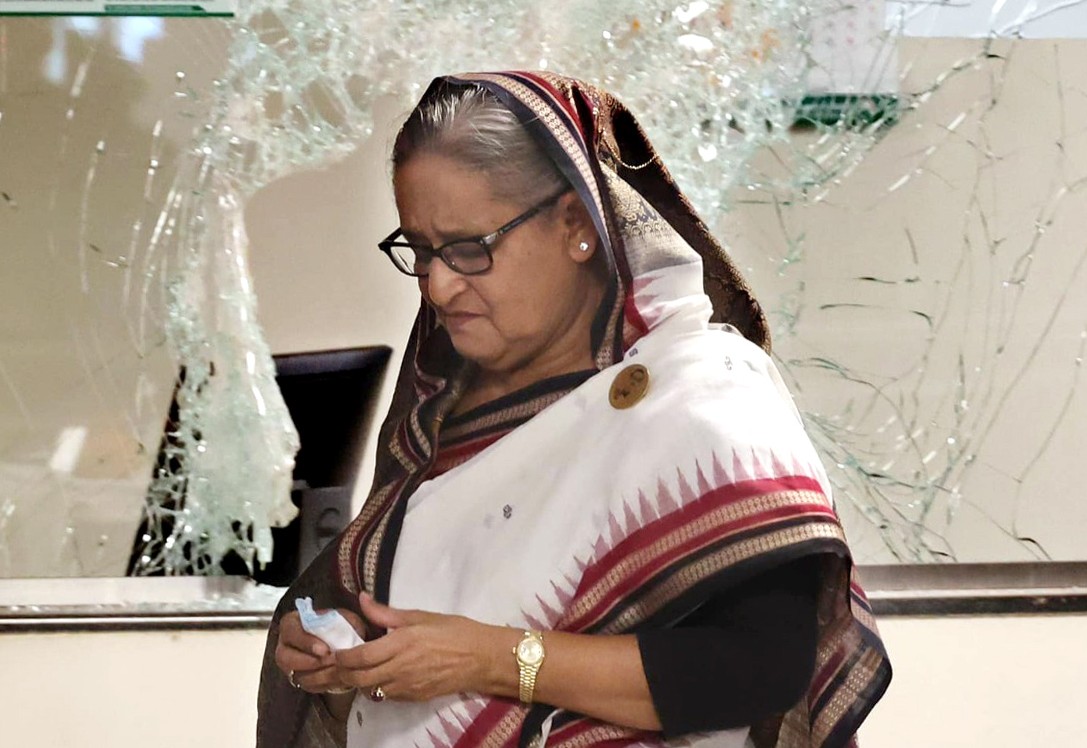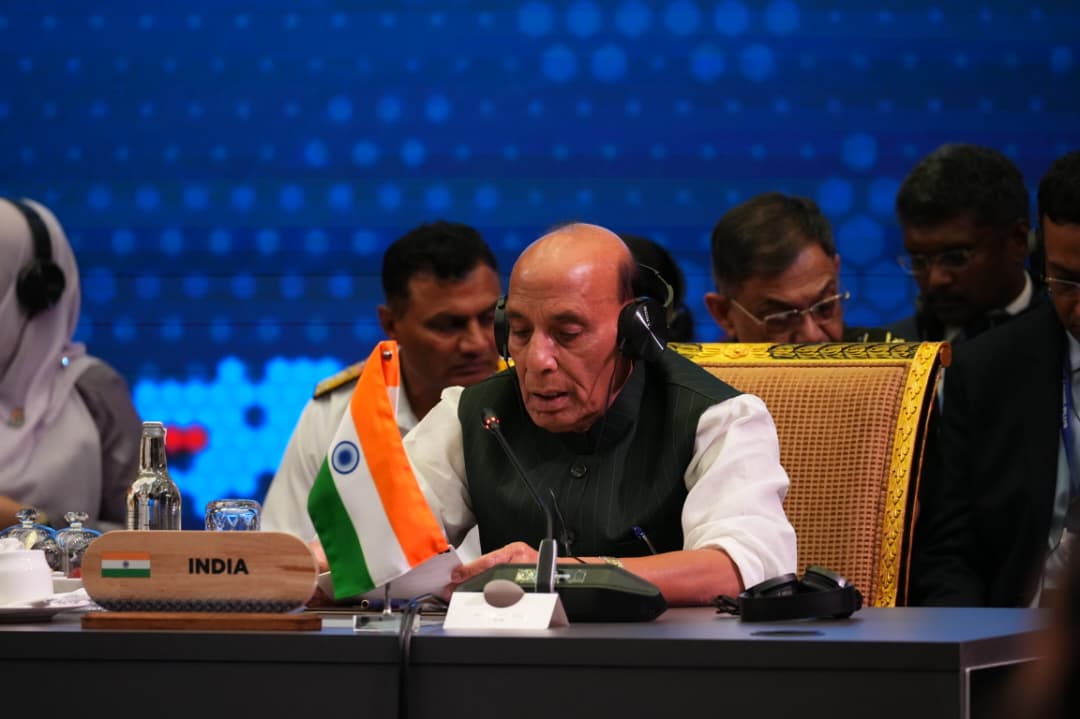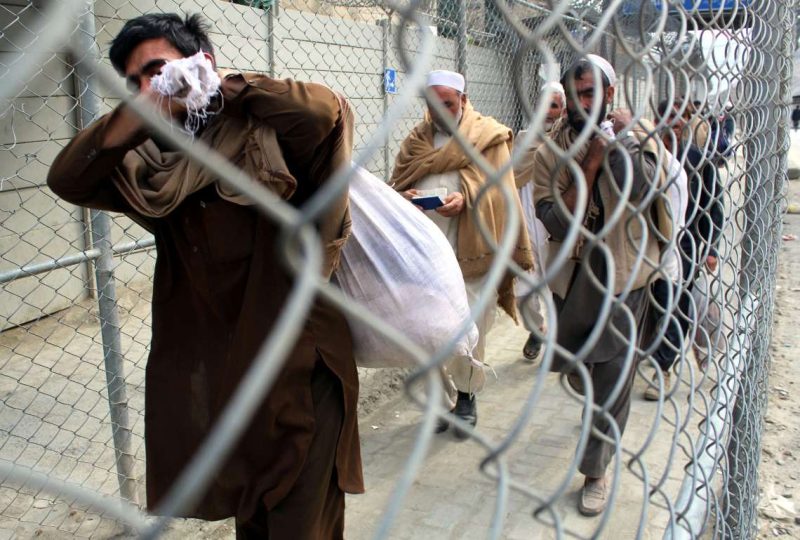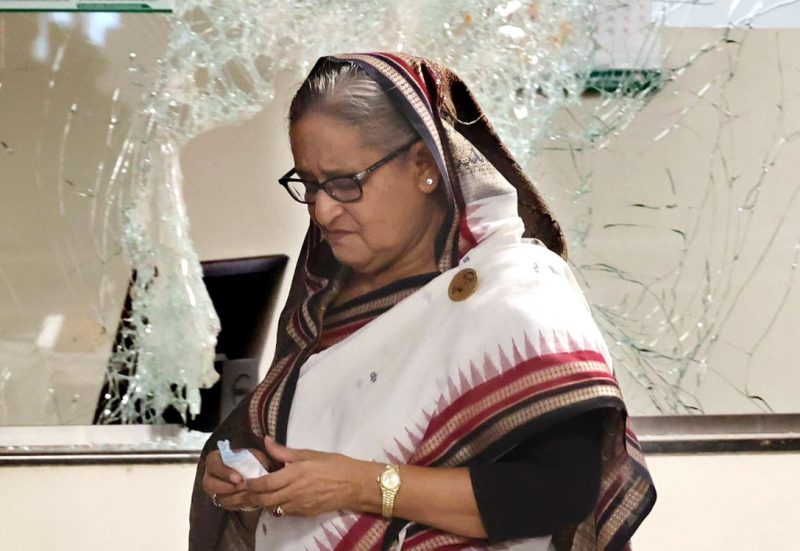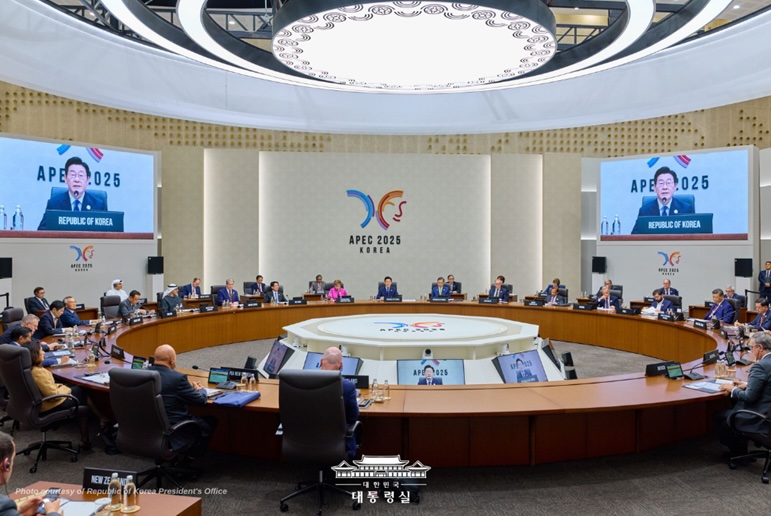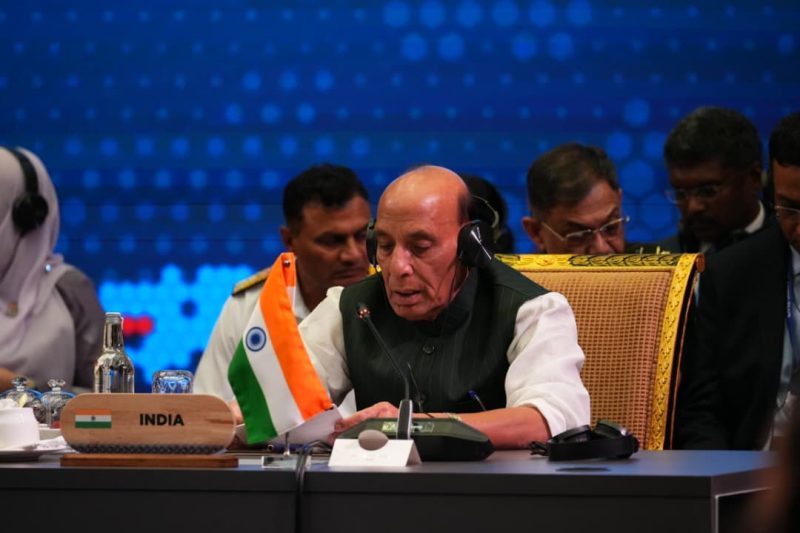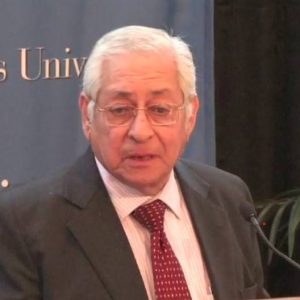Nearly two decades ago, security and intelligence specialists at a conference of Intelligence Summit at Pentagon City, Washington DC predicted that Bangladesh will become the next epicentre for terrorism and jihad unless Bangladesh authority takes steps to contain the imminent crisis…writes Saleem Samad
Bangladesh is presently at low ebb on militancy by Muslim extremists with or without links to the international terror network.
But top terrorism researchers and anti-terrorism police officials do not rule out any possibility of visitation of terrorism in the country, especially by the home-grown Islamic jihad.
Two secretive groups, Jamaat-ul-Mujahideen Bangladesh (JMB) and Ansarul Islam, presently dominate Bangladesh’s jihadist landscape, a top Counter Terrorism and Transnational Crime (CTTC) official confirmed who declined to be identified for security reasons.
Since 2015, two jihadist groups have targeted foreigners, secularists, intellectuals, religious, and sectarian minorities, and other perceived opponents, writes International Crisis Group.
In the last decade, despite widespread acts of violence by Islamic extremists, officially Bangladesh had always denied the presence of international jihadist forces inside its borders.
“There’s no Islamic State (ISIS) in Bangladesh,” declared Bangladesh Prime Minister and Awami League chief Sheikh Hasina in February 2016.
This does not imply that Bangladesh can lower its guard on terrorism and no country can afford to do so, says Prof. Imtiaz Ahmed, a high-profile researcher on terrorism and violent extremism.

Sheikh Hasina’s government adopted zero-tolerance for terrorism, with several institutions dedicated to countering and preventing terrorism and violent extremism in Bangladesh, says Prof. Ahmed of Dhaka University.
Nearly two decades ago, security and intelligence specialists at a conference of Intelligence Summit at Pentagon City, Washington DC predicted that Bangladesh will become the next epicentre for terrorism and jihad unless Bangladesh authority takes steps to contain the imminent crisis. During the same period, similar warnings were given by the New York Times and Washington Post.
Bangladesh nationals have joined terror hotspots in 36 countries. Hundreds of the recruits in different periods boarded flights from Dhaka international airport, with full knowledge of security agencies.
Since the 1980s, for three decades, nondescript militants from Bangladesh or trained in Bangladesh entered Afghanistan, Chechnya, Egypt, Aceh province in Indonesia, Jammu and Kashmir, Malaysia, Myanmar, Mindanao in the Philippines and other Muslim countries where jihadists were active.
Earlier concerned people and national media often interpreted that the radicalised militants are recruited from among the illiterate rural population, pointing their fingers at students who studied in tens of thousands of Madrassa (Islamic schools) spread all over Bangladesh.
Exiled Bangladesh-origin feminist author Taslima Nasreen, rubbished the arguments that poverty makes somebody a terrorist.
Well, political scientist Prof. Ahmed has conducted an in-depth study ‘Rehabilitation and Reintegration of Violent Extremist Offenders in Bangladesh’ and interviewed scores of captive militants both faith-based and left extremism in prisons.
People with relatively poor financial backgrounds are more susceptible to faith-based extremism, he added.
Ahmed said the Soviet invasion of Afghanistan, had created a major impact in Bangladesh, with hundreds of militants who joined the Mujahideen during the anti-Soviet campaign against the invasion of Afghanistan following the calls from Saudi Arabia, Pakistan and the US to resist communism in Afghanistan.
After the collapse of the Mujahideen-led regime in Kabul, most of the militants from Bangladesh returned home and started a violent campaign under HuJI-B (Harkat-ul-Jihad-al-Islami, Bangladesh) under the complicity of the government.
Fazlul Rahman, a Bangladeshi-born jihadist and founder of HuJI-B, joined by dreaded jihadist leaders from Pakistan, Egypt and the Middle East, were the five associates who signed Osama bin Laden’s first-international 1988 ‘fatwa’ purportedly was a call for jihad against the US and its ‘infidel’ allies.
Ahmed explains the figure of the exact number of Bangladesh nationals who fought alongside the Mujahideen is unknown, but others put the figures at 3,000-foot soldiers.
Interestingly there is no information on whether militants from Bangladesh joined the Taliban during the two decades of America’s presence in Afghanistan, and the reason was absence of sponsors and recruitment.
The departure of flights to jihad’s hot spot destination and subsequently the return of hundreds of militants under the nose of the security agencies only happen with the state’s complicity of the Islamic-nationalist regime of Khaleda Zia, several counter-terrorism analysts described.

The recruitment, investment and radicalisation by outlawed Al Qaeda, Al-Qaeda in Indian Sub-continent (AQIS), Ansar al-Islam, Ansarullah Bangla Team (ABT), Hizb ut-Tahrir (Bangladesh), HuJI-B, Islamic State of Iraq and Syria (ISIS or Daesh), Jaish-e-Mohammed (JeM), Jamaat-ul-Mujahideen (JMB), Lashkar-e-Taiba (LeT) and so on so forth are stringently monitored and data thoroughly analysed by CTTC expert team with inputs from other anti-terror units and friendly intel agencies, including the United Nations Office of Counter Terrorism (UNOCT).
The fresh recruitments in recent times are through end-to-end encrypted messaging apps organised by mostly “elite urban young men” who were reported missing by their families and are accommodated discretely in temporary sleeper cells operated by the jihadist network.
Often the sleeper cells are busted and the missing persons reported to the police are found. Instead of returning them to their families, they land in high-security prison cells.
At least 615 extremists within the age bracket of 25-40 are currently held in prisons, among whom 371 are on trial and 244 were convicted, according to a study on ‘Rehabilitation and Reintegration of Violent Extremist Offenders in Bangladesh’ published in September 2022 by Centre for Genocide Studies (CGS) of Dhaka in collaboration with CTTC.
The rehabilitation of violent extremist offenders VEO is a critical task for a nation-state, recommends Ahmed. The government has employed several hard and soft approaches to deal with the threat of violent extremism.
The police and other anti-crime forces have a deradicalisation programme, as well as rehabilitation and reintegration into society. The authorities have plans to enlarge a proactive programme for the rehabilitation and reintegration of faith-based VEOs are on the table.
The recent sleeper cells of the terror network are reportedly low in budget and ordinance, unlike the high-profile ISIS jihadists responsible for the carnage at Holey Artisan restaurant in an upscale residential area in Dhaka in July 2016. The jihadists were armed to the teeth with automatic rifles, grenades and knives.
Possibly an hour before the fire-fight with the heavily armed military commandos, the Islamic State’s Amir for the Bengal (Bangladesh) region Shaykh Abu Ibrahim Al Hanif (a.k.a. Tamim Chowdhury), spoke to their clandestine news agency Amaq. He dubbed the dead militants as fallen martyrs – all young men in their 20s – posing with a terror black flag of the dreaded Islamic State.
In fact, two months before the brutal assault, Canadian-Bangladeshi-born Chowdhury, the mastermind of the ‘Dhaka Attack’ dared to bully Bangladesh and India in the 14th edition of the defunct Dabiq – the Islamic State’s online magazine.
“Bengal is an important region for the caliphate (Islamic Empire) and the global jihad due to its strategic geographic position,” Chowdhury ranted.
In typical terror rhetoric, “Bengal is located on the eastern side of India, whereas Wilayat Khurasan (the Afghanistan-Pakistan region) is located on its western side. Thus, having a strong jihad base in Bengal will facilitate performing guerrilla attacks inside India simultaneously from both sides and facilitate creating a condition of tawahhush (fear and chaos) in India along with the help of the existing local mujahideen there.”
The rogue Islamic State in 2015’s dared to declare Jihad (holy war) against “the (so-called) secular murtaddin (infidels) of the present Awami League government” and threatened that “the soldiers of the Khilafah will continue to rise and expand in Bengal and their actions will continue.”
Not to anybody’s surprise the official Dabiq magazine attributed the opposition Bangladesh Nationalist Party (BNP) as ‘nationalist murtaddin’ and the Islamist party Jamaat-e-Islami (JeI) as “parliamentary murtaddin”, the online magazine wrote that they [BNP and JeI] are an alliance of ‘grave-worshippers’ who falsely claim to be “lovers of the Prophet”.
On a note, ISIS laments that various “jihadi” groups in Bangladesh became fragmented through disputes over issues of creed, methodology, leadership, strategy, and tactics.
Fortunately, most of the sleeper cells of ISIS in Bangladesh and India have been bulldozed by anti-terror forces with credible two-way intel shared with Dhaka and New Delhi.
The intel immensely helped to accurately analyse various info and could zero in on the locations of ISIS militants. The targets were successfully raided by the CTTC, highly trained anti-terror units of Dhaka Metropolitan Police and smashed the jihadist outfit in Bangladesh.
Like the global terror outfit Al-Qaeda, ISIS’s covert activities have been severely dented in Bangladesh.
Simultaneously the jihadist’s sleeper cells in adjoining Indian states across Bangladesh territory were also smashed by Indian Anti-Terrorism Squad (ATS).
Since the assassination of Islamic State supremo Abu Bakr al-Baghdadi and other leaders by US drone attacks in Syria and Iraq, ISIS terrorism has significantly scaled down threats in South Asia.
The in-road of terror footprint was globally established after the US-allied-led ‘War Against Terrorism’ and Afghanistan was invaded to punish Al-Qaeda and Taliban’s high command and crush the global terror network.
When they (Al-Qaeda) were on the run, Al-Qaeda’s communications and finance surreptitiously moved to Bangladesh in collaboration with the notorious Pakistan spy agency Inter-Service Intelligence (ISI).
The ISI hawks of Rawalpindi GHQ negotiated with rogue officers within the Bangladesh security agency of Director-General of Forces Intelligence (DGFI) to provide logistics and security to Al-Qaeda to setup their clandestine operations from upscale Gulshan in Dhaka, according to researcher/writer Mohiuddin Ahmed in his book ‘Hunt for Al-Qaeda (Al Qaeda’r Khoje)’.
For example, former Prime Minister Khaleda Zia knew about the covert operations and was vetted by his delinquent son Tarique Rahman who established ‘Hawa Bhaban’, a powerhouse parallel to the Prime Minister’s Office (PMO).
Several sources suggest the former security agencies officials who are privy to the process of creating a safe house for the most-wanted jihadists in the posh Gulshan area.
The terrorist hub was uncovered by an elite investigation team of British TV Channel-4 in November 2002. The investigative journalists unveil the ISI nexus with DGFI in providing a safehouse for Al-Qaeda on the campus of a mosque.
The revelation came with a heavy price. The Channel-4 journalists and local fixers (including this journalist) were arrested and sued under sedition laws. They were interrogated, tortured and intimidated by three DGFI officials.
The presence of Al-Qaeda in Bangladesh was exposed in a Time magazine October 2002 cover story “Deadly Cargo” after a painstaking investigation found clandestine military training camps bordering Bangladesh-Myanmar inaccessible hill forests of Ukhiya, in Cox’s Bazar and were operated by Al-Qaeda and coordinated by HuJI.
The camps accommodated nearly 2,500 jihadists. It is difficult to ascertain how many batches and what number of combatants were trained in Ukhiya.
The separatist outfits: United Liberation Front of Assam (ULFA), Bodo Liberation Tigers Force (BLTF) and Kamtapur Liberation Organization (KLO), National Democratic Front of Bodoland (NDFB), National Liberation Front of Tripura (NLFT), National Socialist Council of Nagaland (NSCN) and the All Tripura Tiger Force (ATTF) and the list grows on and on were provided shelter and logistics in Bangladesh territory.
Taking advantage of India’s pitch against illegal migration in the northeast from Bangladesh, the authorities furtively provided shelter to their leaders and allowed their combatants to set up camps inside Bangladesh territory.
Their finance, logistics and ordinance were exclusively provided by ISI. In one such, gunrunning operation destined for Assam, a huge stash (10 truckloads) of weapons, ammunition, rocket launchers and hand grenades were accidentally seized by police when it was unloaded under the cover of darkness at a jetty in Chittagong (now Chattagram) in April 2004.
The ordinance originated from Cambodia was shipped by ace gunrunners and unloaded at Chattagram. The ULFA military wing chief Paresh Baruah was physically present, while mid-level officers of DGFI and National Security Intelligence (NSI) were supervising the unloading of the illegal consignment from a large fishing vessel, as reported in the Bangladesh Observer.
After 2009, with Hasina in power, Dhaka and Delhi agreed to seize cross-border terrorism. Hasina’s crackdown detained most of the separatist leaders and deported them to India, where the belligerents are held as prisoners of war (POW). Scores of militant camps were dismantled.
Simultaneously, on the orders of Bangladesh (Central) Bank, all the bank accounts of the separatist outfits and their allied business conglomerates were shut down.
The sudden move by the authorities severely fractured the backbone of the separatist movement in northeast India, also known as Seven Sisters.

The nexus between Pakistan and Khaleda Zia was established after the former ISI chief General Asad Durrani admitted to meddling in northeast Indian states and funding the right-wing BNP during the 1991 general elections in that country.
The confession was made at Pakistan’s Supreme Court’s hearing on the spy agency that had allegedly disbursed Rs 50 crore to BNP chairperson and former prime minister Khaleda Zia ahead of the 1991 elections in which the BNP won and formed the government.
It is presumed that the ISI was active in Bangladesh whenever the BNP has been in power (1991-96) and later during 2001-2006.
Similarly, Khaleda’s assassinated husband General Ziaur Rahman provided umbrellas for Nagaland and Mizoram secessionist leaders and allowed guerrilla camps to be set up in Chattagram Hill Tracts (CHT) in the last quarter of the 1970s.
The shakeup in DGFI and other state intelligence agencies was initiated by Hasina after she became Prime Minister 14 years ago. She broke the nexus with foreign intelligence, especially ISI’s local patrons which have vanished in quicksand.
On the other hand, Bangladesh counter-terrorism officials dug into the covert activities of diplomats from Pakistan. The furore over expelling diplomats from Dhaka and Islamabad caused fresh diplomatic rows between the two countries.
Bangladesh expelled two diplomats, one woman envoy for alleged “terror financing” and another for “spying”, while Pakistan expelled a woman diplomat from Islamabad for an unknown reason.
A ‘new chapter’ for terror in Bangladesh seems to have surfaced in the Rohingya refugee camps teeming with dispossessed youths. The camps are another fertile ground for potential recruitments for extremism – some recruitments were voluntary, others were coercion and intimidation to join the banned Arakan Rohingya Salvation Army (ARSA, also called Harakah al-Yaqin) to separate north Arakan for the homeland of the Rohingyas.
ARSA’s supremo and key leaders were born in Karachi, Pakistan and raised in Saudi Arabia – some Bangladesh security experts believe the shadows of the terror network were nurtured by ISI, which rang alarm bells in both Dhaka and New Delhi.
Pakistan-based terror outfits were looking for fresh ground for jihad. Immediately, the Pathankot attack mastermind Mohammad Masood Azhar, founder of Pakistan-based terrorist organisation JeM in September 2017 called on the world’s Muslims to unite for this cause of the persecuted Rohingya. “We have to do something and do it urgently. Myanmar’s soil is earnestly waiting for the thumping sound of the footsteps of the conquerors”.
“The dream (of Al-Qaeda) is to create a larger Islamic beyond the territorial limits of Bangladesh to include Muslim areas of Assam, north Bengal and Burma’s (Myanmar) Arakan province.” That dream, Alex Perry writes in Time magazine that if Islamic terrorists were allowed to continue their operations in Bangladesh, could be a nightmare for the region.
The HuJI-B, JeM, LeT and AQIS envisaged engaging the Myanmar troops and anti-Rohingya Buddhist monks through Islamic jihad to create a haven, which Bangladesh security forces are hell-bent on not happening in the region.
(Saleem Samad is an award-winning independent journalist based in Bangladesh. Views expressed are personal. Twitter: @saleemsamad)
(The content is being carried under an arrangement with indianarrative.com)


